THE AUTHENTIC SAFARI DESTINATION

Nairobi, originally little more than a watering hole for Masai tribes, became a substantial town by 1900 due to the building of the Mombasa to Uganda railway. In 1905 it succeeded Mombasa as the capital of the British protectorate. Today it is the largest city between Cairo and Johannesburg.
When it comes to game viewing, there is nowhere in Africa richer in wildlife or more eventful in encounters than the Mara. A pristine wilderness of haunting beauty, it promises its visitors a profusion of wildlife, prolific bird life and the unprecedented opportunity of catching up with all the members of the “Big Five” in one morning.
As to scenery, the 1,800 sq kms of this veteran reserve offer the classic mix of African imagery; golden grasslands, lilac-misted hills, meandering river, acres of thorn-bush and undulating wilderness.
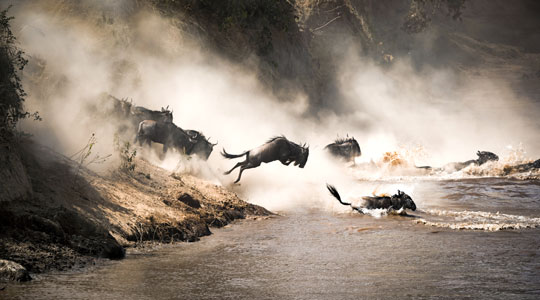

The biggest annual event in Kenya is the migration, where huge herds of wildebeest head from Tanzania’s Serengeti National park into Kenya’s Masai Mara in search of greener pastures. Entering Kenya in late July/August each year, more than 2 million of these animals migrate across the Mara River into Kenya accompanied by zebras, antelopes, gazelles and lions. In October/November the animals return to the short grass plains. The highlight of the migration is watching the animals crossing the Mara River in Kenya.
As its name would suggest the Masai Mara is the home of the fabled Masai people. Often strikingly tall and slender, swathed in brilliant red cloth ‘Shukas’, strung with beads and metal jewellery, the young men (Moran) favour long, plaited, ochre-daubed hairstyles and have a formidable reputation for glamour, prowess and ferocity. Traditionally the Masai live off the milk and blood of their beloved cattle and believe that all the world’s cattle are theirs by God-given right. Their nomadic and pastoral lifestyle, though historically based on the pursuit of the migratory wildlife, is slowly changing.


The Park lies below the most famous symbol of Africa – Mount Kilimanjaro 5,895 metres the highest mountain in Africa and the tallest freestanding mountain in the world. The surrounding area is flat, covered by savannah and acacia scrub and the animals stand in silhouette against this towering majestic giant, its snow-clad peak floating in the stark blue African sky.
This park is especially well known for its large herds of elephants and its birdlife. Other game frequently seen include buffalo, zebra, wildebeest, gazelle, Masai giraffe, lion and cheetah.
Rugged and remote, Samburu National Reserve lies within the fascinating semi-desert area of Kenya’s Northern Frontier District. The Reserve is physically dramatic with the great Ololokwe table mountain in the background. The central feature of the reserve is the winding and looping Ewaso Nyiro River. On either side of the river, a green ribbon presents a gallery of forest acacia, doum palm and Tamarind, which act as host to a multitude of birdlife.
Some of Kenya’s rarer species like the long-necked gerenuk, Grevy’s zebra, reticulated giraffe, beisa Oryx and blue-shanked Somali ostrich can be seen here.
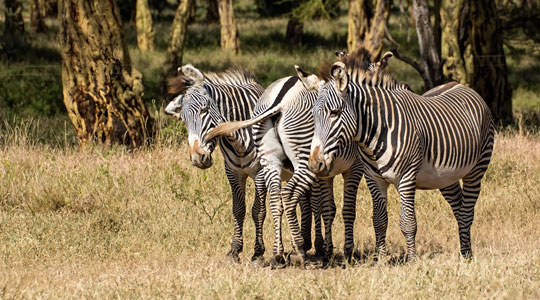
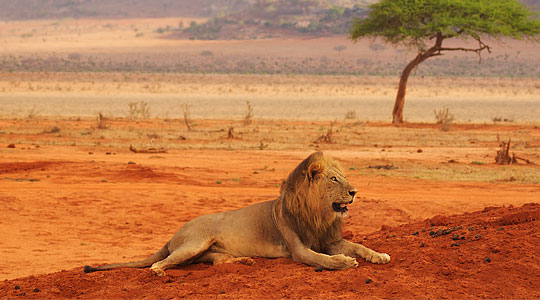
Both Tsavo East and West are ideal for those who enjoy solitude and a chance to explore wilderness without encountering other people. Lodges and camps tend to be remote and accessible by long drives or air transfer. Of the two Parks, Tsavo East is the more remote and less visited.
The relative proximity of Tsavo East to the coast makes it an ideal safari destination for those staying on the coast, or wishing to combine a safari and beach holiday. Many coast based visitors combine a safari to Tsavo with visits to the Shimba Hills and Taita game sanctuaries, Amboseli National Park, or Chyulu Hills.
Situated between Lakes Naivasha and Baringo, beneath the high cliffs of the Eastern Rift, lies Lake Nakuru. This is a shallow soda lake surrounded by yellow-barked acacia woodland and grasslands, rocky cliffs and hillsides covered with the unusual giant Euphorbia trees. Lake Nakuru is world famous as the home of myriad flocks of greater and lesser flamingos that frequently form a stunning pink ribbon along the edges of the lake.
Over 400 species of birdlife have been recorded at the lake, making this yet another of Kenya’s major ornithological sites. In addition to the birdlife, the park is home to herds of buffalo, waterbuck, impala, Rothschild giraffe, and leopard. A defined area of the park has now been designated a rhino sanctuary making Nakuru the best park in Kenya for seeing Rhino.
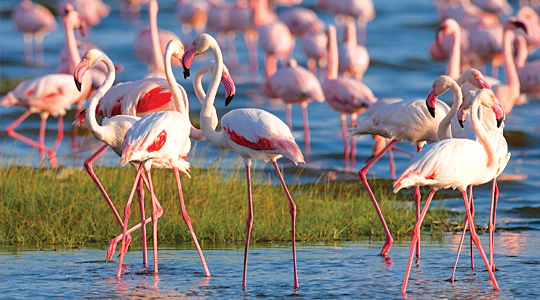
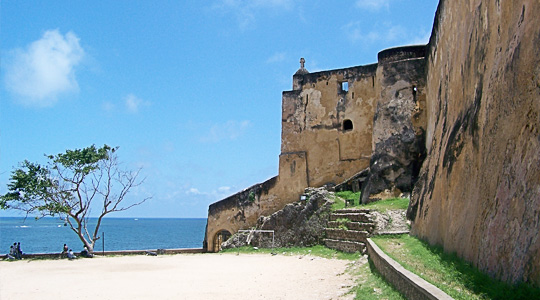
Mombasa is an island connected to the mainland by bridges and ferries. The town overlooks a wide harbour, where commercial shipping mingles with traditional sailing dhows. The true heart of Mombasa is found in the exotic old town, among the narrow winding streets and Arab architecture. The streets are alive with the bright colours of the traditional coastal khanga and kikoy, the all-purpose wrap around cloth worn by both men and women.
At the waters edge is Fort Jesus, an imposing fort that stands watch over the harbour. The high gun turrets, battlements and underground passages of this 16th Century Fort were the centre of a historic struggle for control of the Kenya coast between the Portuguese army and the Shirazi Arabs. This war was waged around Mombasa over hundreds of years and countless battles, and the Fort stands as a testament to this tumultuous past.